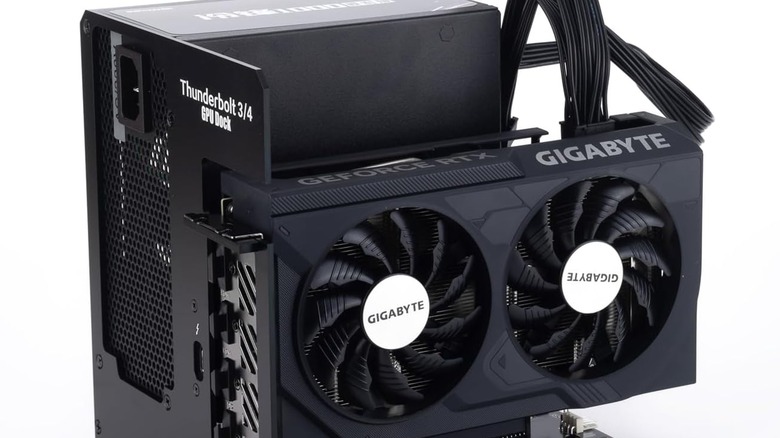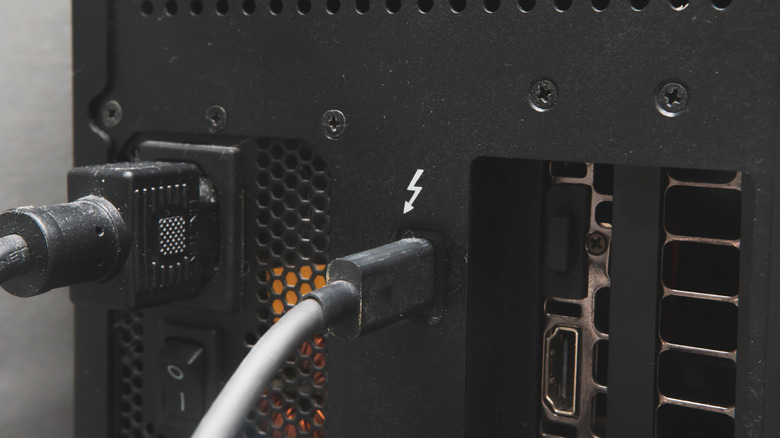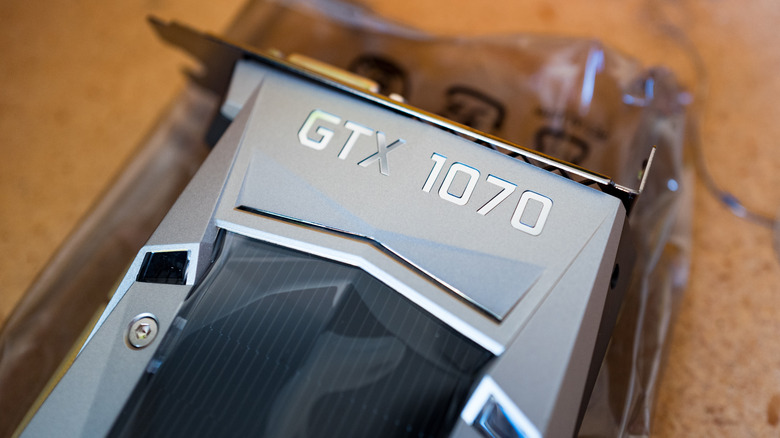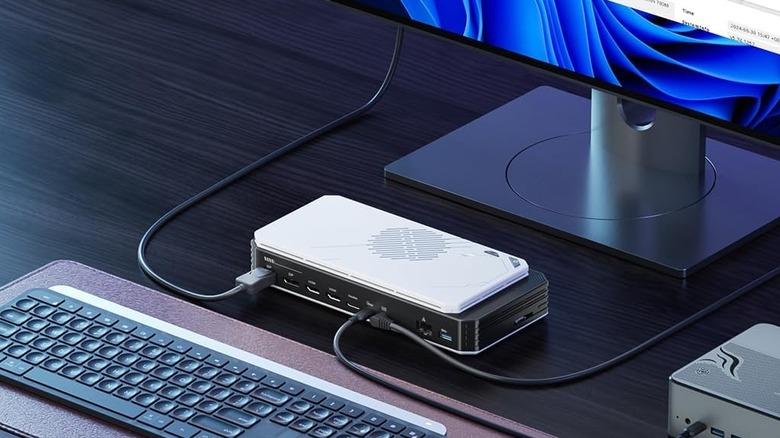How To Pick The Right eGPU For Your Laptop Or Gaming PC
We may receive a commission on purchases made from links.
One of the annoying things about being a PC gamer is the reality that your current GPU will, invariably, become outdated one day. When that day finally comes, you're going to have to go through quite the rigmarole to open up your case, remove the old one, and install a new one without damaging anything. That's all banking on the assumption that you even have a case that can be opened and tinkered with — if you have a prefab gaming laptop, for instance, there's a very good chance the parts are non-removable, at least not without extensive, invasive work.
If you're sick and tired of futzing with graphics card installations in your gaming PC or just want improved performance on a gaming laptop, the solution to your problem may lie in an external GPU, or eGPU for short. If your setup can support an eGPU, it's a great way to add some modular support and make future proofing the whole thing much easier. Of course, the big question is whether your PC can support an eGPU, and even if it can, which particular setup is right for you.
Make sure your computer can actually handle an eGPU
Obviously, most PCs and laptops are designed with the idea of having all of their parts safely packed inside their cases, GPUs included. Accommodation for an external GPU isn't something that's going to be built into all PCs or laptops. In general, the first and foremost thing you need to connect an eGPU to a PC is a proper connector, something that can facilitate a high-speed transfer of data with support for external graphics. In most cases, this means your PC needs to have a Thunderbolt 3, Thunderbolt 4, or USB-C port ready for action. If you don't have at least one of those ports, an eGPU is off the table. Some eGPUs may have their own proprietary connectors, in which case you'll have to check their respective details to see if your rig has the requisite hookup.
Additionally, it's important to remember that an eGPU can only handle the graphical part of high-level visual rendering. Your PC still needs to have sufficiently powerful hardware, including the RAM and processor, to match the eGPU's output. If you try to plug an eGPU into a bargain-bin laptop and run something strenuous, the graphics will look nice for a moment until the processor fries like bacon or the battery gets sucked dry. In short, before you buy or build a GPU, do some research on the unit and its parts and see how they measure up against what's already in your rig.
Choose between a prefab eGPU or building it yourself
Much like any piece of computer hardware, an eGPU can either be purchased prefab or assembled from composite parts. Of course, also like a PC, this decision can bring about its own headaches.
A prefab eGPU will have just about everything you need already packed inside and ready for action. This is definitely nice from a convenience standpoint, as you can just pull it out of the box and plug it into your PC to get to work. However, much like a prefab PC, buying a prefab eGPU presents the risk of off-brand or faulty parts. If any of the parts fail or don't work right, and you don't know how to open it up for repairs, then you've effectively purchased a very expensive paperweight.
This brings us to the other option, building an eGPU from scratch. Creating a modular eGPU will make it much easier to swap out the parts within as necessary, which will be particularly helpful if and when you need to upgrade the GPU. Of course, going this route means you'll need to source all the parts yourself, including an adequate power supply, a cooling system, the GPU, the necessary connectors, and an enclosure to put it all in. You'll also need to ensure the enclosure is actually designed to receive whichever brand of GPU you want to use. If you don't already have experience in PC assembly, this isn't a good route.
Ensure you have enough space to comfortably place an eGPU
A regular GPU, even on its own, can be on the bulky side. It's not unusual for one to take up the lion's share of the real estate inside your PC case. The same is true for an eGPU — even if you don't have to worry about finding a spot for it inside your PC or laptop, you still need to ensure there's a good spot for it nearby. An eGPU needs a safe, flat surface to sit on while in operation, not dangling over your desk and not sitting on a carpet. Basically, any placement you wouldn't use for a regular computer, don't use for an eGPU.
If you plan to use an eGPU with a stationary PC, this isn't a big problem, but if you're using it with a laptop that you carry around with you, consider buying or building an eGPU that's safe to move around. Something lightweight with reinforced edges or an elevated stand would be ideal. Just know it's going to be a bit heavy either way.



